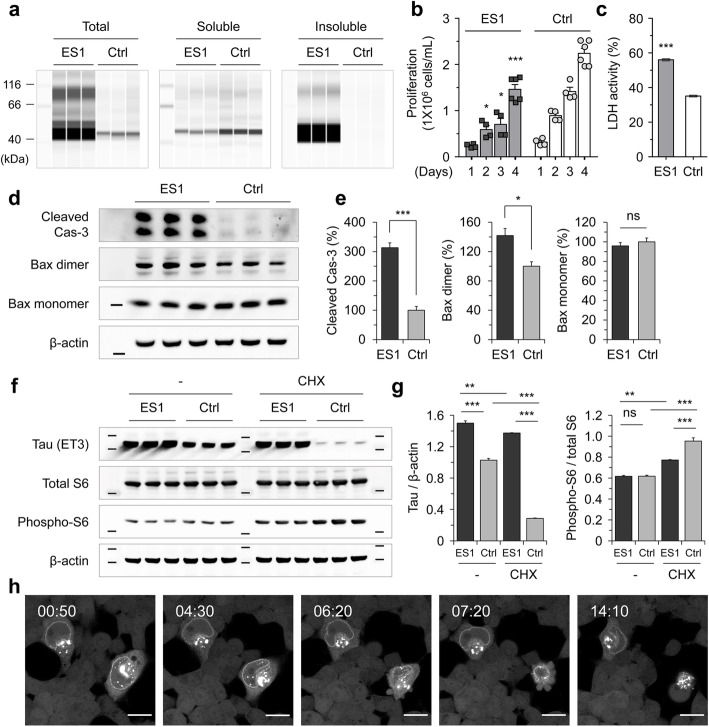Fig. 4.
Tau-mediated reduction in cell viability of ES1 cells. a Sedimentation of Triton X-100 insoluble tau. ES1 and control cell lines (the reporter cells) were lysed in PBST and sedimented at 100,000×g for 1 h. The amount of tau in soluble and insoluble fractions was analyzed using capillary western with anti-tau mAb (ET3) (n = 3). b Proliferation of ES1 cells was determined by counting viable cells at the indicated time points (n = 4). c LDH activity in conditioned media of ES1 was measured as an indicator of cell death at 3 days post splitting (n = 4 independent cultures each with 4 technical replicates). d Western blot analysis of apoptotic cell death in ES1. The amount of cleaved caspase 3 (Cas-3) and dimerized Bax were analyzed in ES1 and control lines (n = 3). e Intensity measurement of the western results in d. Intensities were normalized to those of β-actin. Error bars represent SEM. f Western blot analysis of the 40S ribosomal protein S6. g Intensity measurement of the western results in f. Translational rates in ES1 and control cells were appraised by the ratio of the phosphorylated ribosomal protein S6 to total S6 in the presence and absence of cycloheximide (CHX, at 20 μg/mL for 16 h) (n = 3). Error bars represent SEM. One-way ANOVA with Tukey’s multiple comparison test. h Time-lapse imaging of 4RD-YFP tau reporter cells seeded with pathogenic tau as per Fig. 1. The cells including nuclear envelope tau inclusions underwent regulated cell death with nuclear deformation. Cells were imaged every 10 min for 15 h. Scale bar, 20 μm. *p < 0.05, **p < 0.01 and ***p < 0.001 in comparison with the controls

